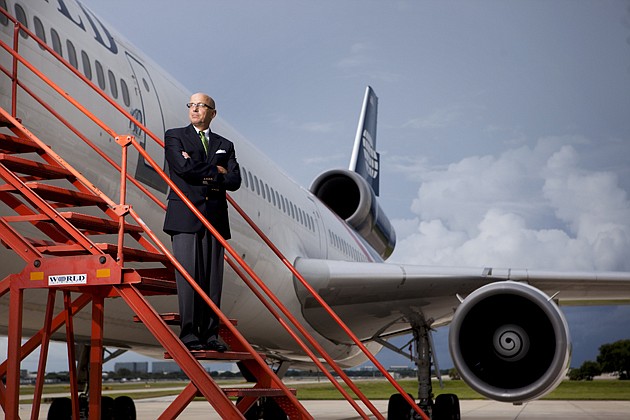At mid-afternoon on the ground floor of Tampa International Airport, a baggage carousel spins luggage onto a conveyor belt as a trickle of passengers from Columbus, Ohio, stride up to fetch their suitcases. It is an almost leisurely scene that gives no hint of the growth that airport CEO Joe Lopano anticipates, or the need for a costly new terminal envisioned by airport planners long before Lopano's arrival in 2011.
Seven years ago, the airport's ambitious master plan called for the construction of a $1 billion terminal north of the existing building to handle the rising number of passengers, particularly international travelers, with the total bill for airport improvements exceeding $3 billion. Then came the recession, depressing air travel and scuttling the new development. Now, airport planners are back with far more modest changes in mind, but those plans could have a big impact on travelers who rent cars or experience frustrating traffic delays.
Although at mid-afternoon the airport seems calm enough for travelers to admire the gleaming gold and gray floors as they progress to rental cars or the parking lots, at peak hours, the lots are jammed, and rental customers can encounter delays while incoming passengers face curbside congestion stemming from the rental services. It is a scenario that is likely to intensify as the number of travelers rises from the current 17 million to a projected 19.7 million in 2016 and 28.7 million by 2031.
Given the lingering economic risks, and the airport's focus on growing revenues to plow back into capital improvement, it makes more sense to reconfigure the existing terminal, says Lopano, rather than plunging into a costly new terminal project. If the number of travelers rises steeply and the redesigned main terminal isn't sufficient, the airport can build a new terminal at that time.
Airport revenue is projected to be $183 million in fiscal year 2013, up from $162 million in 2010, with $27 million projected profit. Expenses, meanwhile, have risen from $87 million in 2010 to $98 million for 2013, reflecting rising fuel and health care costs.
The airport is in the throes of vetting a new master plan, holding public meetings as it scales back the earlier design. The airport expects to submit a final plan to the Federal Aviation Authority by February, says Lopano.
“In order to grow the main terminal we have to decongest it,” Lopano says. For example, the rental companies would be gathered into a new building south of the airport. A “people mover” would ferry the rental customers to the terminal to ease curbside congestion.
As the rental services and employee lots move south under the proposed plan, new stores and services will crop up to meet their needs. “You're going to have 10,000 people a day in that area. They need gas,” and other services, Lopano says. Virtually a small city, or “Aerotropolis” as Lopano calls it, would develop south of the airport, and linking it to the main terminal could prove valuable, he says.
Although improving travelers' experience is important, the core of his long-range plan is to draw more international service, such as the Edelweiss Air flights from Zurich to Tampa.
“Every time we bring in an international wide body, it generates $150 million — 300 people arrive on the Edelweiss flight, each carrying $10,000 in their pocket,” Lopano says. With international travel rising at a faster pace than domestic, he hopes to inaugurate flights to Germany, Brazil, Panama, Mexico, and add more Caribbean destinations.
Another strategy for growth is a plan to add nonstop flights to the West Coast, including destinations near the Silicon Valley, which could stimulate regional growth. Currently about 155 people fly daily from Tampa to San Francisco, and all must take connecting flights, according to the CEO.
Executives and employees of Jabil Circuit, a circuit manufacturing company based in St. Petersburg, frequently fly to San Francisco, notes Lopano. “If we got a nonstop to San Francisco, we would become a much more attractive place for high-tech relocation. It's important for us to have the infrastructure to the West Coast in order to attract companies.”






